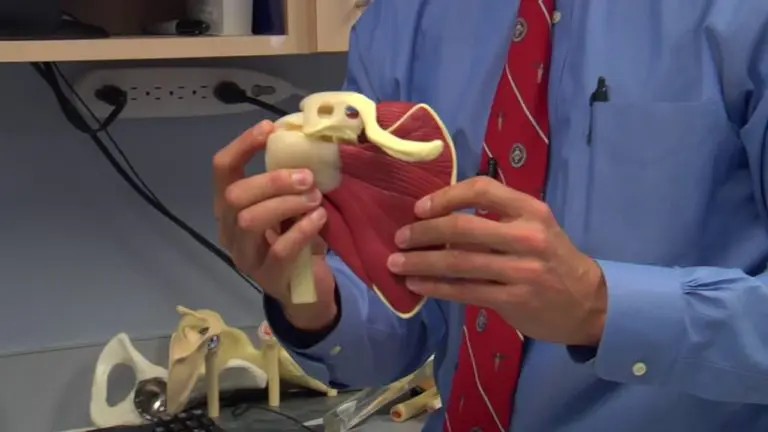If you think you might have been injured in an accident, it’s important to see a doctor as soon as possible. However, if you want to seek compensation for your injury, you’ll have to file a claim within the statute of limitations. In Pennsylvania you have two years after a car accident to file a claim. And you’ll have to have a diagnosis and treatment plan from your doctor before that period expires. Ensuring that you have a complete diagnosis from a licensed doctor as soon as possible can protect you from legal hiccups during this process. Remember, you only have two years during which to file a suit for your injuries in Pennsylvania.
What Does Statute of Limitations Mean?
Statute of Limitations is a defined time during which you are able to file your legal suit. Every state has a statute of limitations that starts running from the date of the accident. The amount of time varies from state to state. Your claim for injuries must be filed before that period runs out. In Pennsylvania, the statute of limitations for personal injury is two years. In other words, you have to claim your injuries within two years of the date of the accident.
How Much Should I Claim for My Car Accident?
Every car accident case is different and so many factors contribute to the amount that can be claimed. Experienced car accident attorneys can help you evaluate your potential claim amount. Factors to consider include the extent and severity of your injuries, amount spent on treatment, surgery, cost of medical bills, compensation for your pain and suffering, disability, loss of wages and normal lifestyle. Permanent and serious injuries increase the claim amount. In addition you need to be able to prove fault to get compensated.
What to Do After a Car Accident Injury
If you have sustained any kind of injury following a car accident, seeking medical help and treatment should be your priority. If you immediately notice that you are injured, call emergency paramedics or ask someone to call them for you.
If your injuries begin to set in a day or two later, it’s essential to schedule an appointment with your primary care doctor as soon as possible or even drop in at an urgent care facility.
However, not all injuries are apparent and may take time to become prevalent. If you are involved in an accident where you do not feel hurt at the scene, you should not immediately assume that you have no claim. Often, the chaos and unrest at the accident scene can mask a number of injuries that may appear and cause pain in the coming hours or days.
Although you may not feel injured at the time of the accident, be sure to contact your doctor as soon as possible.
A proper medical examination may be critical in revealing the extent of your injuries and providing evidence of those injuries later in the litigation process. Without proper documentation of these injuries, it will be very difficult to recover the money to which they are rightly entitled.
To get more information about “What to Do After a Car Accident” Click here.

Common Car Accident Injuries
Some injuries are more common and may be noticed within days. Other serious types of injuries can cause long-term health problems and physical disabilities, and you may not notice them right away. A car accident victim may sustain traumatic injuries that can cause serious medical conditions.
Most car accident injuries become apparent and intensify over time. Therefore, make sure to take proper medical care and stick to your treatment plan. The following are some of the most common injuries associated with a car accident:
- Traumatic Brain Injuries (TBI)
- Rotator Cuff Injuries
- Internal Bleeding
- Whiplash Neck Injuries
- Spinal cord injury paralysis
- Other Car crash injuries
Traumatic Brain Injuries
When a car accident occurs, drivers and passengers are jolted or thrown around, which can lead to occupants violently hitting their head on a surface in the vehicle. This type of violent impact can lead to traumatic brain injuries or TBI’s. TBI’s occur when the brain is violently bounced around inside the skull, resulting in internal bleeding, bruising, and ripping of nerve fibers within the brain.
Depending on the severity of the accident, and the severity of the resulting TBI, the results following an accident can drastically differ. For some, the results of a brain injury could be nothing more than the symptoms of a mild concussion. For others, the results could be permanent brain damage, disability, and in some cases, death.
There are a number of secondary injuries that can occur following a TBI, including:
- Contusion: Contusions are bruises caused by an impact to the head that directly bruises the brain.
- Concussion: Concussions are generally mild head injury that most often results in no permanent brain damage, often accompanied by a brief loss of consciousness.
- Hematoma: When an injury occurs and a blood vessel ruptures, clots form to stem the flow of bleeding. Sometimes, when a TBI occurs, this can result in large clots of blood-forming in spaces of the brain that require surgical removal.
- Hemorrhaging: Occasionally, arteries in the brain tear during a traumatic injury event. Normally, the brain is surrounded by cerebrospinal fluid to cushion it inside the skull, but a TBI can cause the spaces around the brain to flood with blood instead.
Studies have shown that life expectancy for individuals who have experienced a TBI is lower than those who had never received one. Although it is unclear whether the shortened life expectancy is due to altered characteristics of the individual or the nature of the injury itself, there is a link to premature death. Reference
TBI Symptoms
The Mayo Clinic cites the following as symptoms of a traumatic brain injury.
Physical symptoms include either loss of consciousness or feeling dazed and disoriented, dizzy or unbalanced, followed by a headache, possible nausea, fatigue, and problems with speech. Some people have trouble sleeping or sleep more than they usually do.
People with mild TBI may be sensitive to light and have blurred vision, have a bad taste, or changes to their sense of smell. They may experience problems with remembering and concentration and can have mood swings or feel anxious or depressed.
Depending on the type and severity of TBI, the victim’s medical care could range from light rest and medication to intensive hospital care. In the event of a moderate or severe TBI, the patient could be comatose or even paralyzed, and may require extensive care to recover.
Rotator Cuff Injuries
Your rotator cuff is an amalgam of four muscles, all of which are connected to the humerus (or the upper arm bone), attaching the bone to the shoulder to help with arm movement. Each of these muscles has a tendon attaching to the arm.

Common Causes of Rotator Cuff Injuries
Two of the most common causes of rotator cuff tears that we see in our practice are from:
- Car accidents that cause a driver or passenger to thrown around the vehicle;
- Slip-and-falls in which the victim lands on an outstretched arm in an attempt to break the fall;
- Motorcycle accidents and bicycle accidents where the biker is thrown from the cycle or bike.
Car accidents, slip-and-falls, motorcycle accidents, and bicycle accidents will often lead to acute tearing of the rotator cuff tendons. However, there is also a more gradual tearing of the rotator cuff, which is called degenerative tearing.
Rotator Cuff Injury Symptoms
Sometimes, it is difficult to know if the discomfort you feel is simple soreness or something more serious, like a rotator cuff tear. The following are some common symptoms of rotator cuff tears to help you understand the seriousness of your injury. Rotator cuff tears will often cause:
- Pain and/or weakness while raising or lowering your arm.
- Pain and/or weakness while rotating your arm.
- Pain while lying on your arm.
- Snapping or cracking sounds when attempting to move your arm.
If you are experiencing intense pain, or the discomfort you are feeling is continuous, you should seek medical attention. In diagnosing you, your doctor will examine your arm, shoulder, and neck to check for limited mobility or tender spots. Your doctor might also order X-ray testing or Magnetic Resonance Imaging (MRI) to get a better view of your bones and muscles. If your doctor finds either partial tearing or full-thickness tearing, he or she will decide whether to treat the injury non-surgically—meaning rest, medication, and physical therapy—or surgically. In all cases, a torn rotator cuff is an injury that demands proper medical treatment.
Internal Bleeding
As its name suggests, internal bleeding is bleeding which occurs within the body. The injury can be very serious and will certainly require immediate medical attention. Oftentimes, the cause of internal bleeding will be obvious; likely a major trauma. In rarer cases, this injury takes many hours, or even days, to become apparent. Internal bleeding can lead to several health complications, among which are hemorrhagic shock, organ dysfunction or organ failure, brain damage, or even death.
Common Causes of Internal Bleeding
There are many causes of internal bleeding, many of which can occur during a car accident, motorcycle accident, or truck accident in Pennsylvania.
Blunt Force Trauma
In the case of a car accident or fall down accident, a blunt force trauma could occur, the impact of which could compress the internal organs and damage them. If traumatic compression happens, it could cause the organ to bleed within itself. More severe injuries could cause the organ lining to tear and the internal bleeding to spill out, for example, into the abdominal cavity.
Acceleration/Deceleration Injury
A sudden jarring stop, as can occur during the moments of impact in a car accident, can cause the brain to jostle around inside the skull. This can cause the brain to crash into the wall of the skull and tear veins, triggering internal bleeding. It is important to note that any bleeding in the skull whatsoever is critical as the smallest amount of blood can create pressure, hindering brain function.
Symptoms of Internal Bleeding
Depending on the injury and its severity, the symptoms of internal bleeding are varied. However, the following are known symptoms of an internal bleeding injury:
- Pain in the abdomen/swelling of the abdomen
- Dizziness, feeling light-headed
- If soft tissues absorb the internal bleeding, the result can be the formation of a purple area on the skin.
- Losing consciousness or experiencing headaches
Sometimes internal bleeding will cease without interference. However, persistent internal bleeding may require surgery. There are a number of surgeries to address this problem, all of which depend on the location and severity of the bleeding.
Whiplash Neck Injury
Whiplash is a broad term used to describe neck pain following an injury to the soft tissues of your neck (specifically ligaments, tendons, and muscles). Cervical Acceleration/Deceleration (CAD) is an injury to the neck which is most often caused by rear-end motor vehicle crashes. When a car strikes another car from behind, the victim’s neck is thrown backward and then forward quickly enough to cause damage to the muscles, discs, or ligaments on or around the cervical vertebrae. The backward/forward snapping motion of CAD is why the injury has come to be known as “whiplash.” RightDiagnosis.com, a medical website, reports that about 120,000 cases of whiplash occur in the US every year.
Symptoms of Whiplash from Rear-end Collision
There are a slew of symptoms associated with this injury, some of which are apparent immediately. Other symptoms are more subtle or come on gradually. Symptoms include:
- Sharp pain in the neck
- Stiffness in the neck
- Headaches
- Shoulder pain and stiffness
- Fatigue
- Dizziness
- Tingling and/or numbness in the fingers
Whiplash Treatment?
Whiplash can be a very serious injury. According to a Johns Hopkins “Symptoms and Remedies” database, some useful treatment tips for minor cases of whiplash include the following:
- During the first 24 hours following the injury, apply an ice pack to reduce pain and swelling.
- Rather than a pillow, sleep on a towel that is rolled up (less than two inches in diameter).
- After 24 hours, hot showers and compresses may help with pain and swelling.
- For more severe cases of whiplash, your doctor may suggest wearing a padded neck brace. He may also prescribe nonprescription pain relievers or muscle relaxants.
Spinal Cord Injury Paralysis
Damage to the spinal cord is one of the scariest and most debilitating injuries a person can experience. When the injury occurs as the result of a car accident, motorcycle accident, or truck accident, the injured body part is most often the spinal cord.
Significant damage to the spine and spinal cord is often caused by a sudden force that results in a fracture or compression of the vertebrae. Severe damage to the spinal cord can be instantaneous or gradual as the injury swells, bleeds, and inflames over days or weeks.
Here are some indications that you or someone you know has suffered a spinal injury following an accident:
- Severe pain in the neck, head, back
- Lack of coordination or control over any part of the body
- Numbness or loss of feeling in hands and feet
- Difficulty breathing
- Incontinence
Of course, not all spinal cord injuries lead to paralysis. There are two general types of spinal cord injury: Complete and incomplete. An injury resulting in paralysis is often considered a complete injury. Incomplete spinal cord injuries, on the other hand, may leave the victim with only partial paralysis, or no paralysis at all. But even so, an incomplete spinal cord injury can be debilitating and may require extensive medical treatment and rehabilitation. The following are some examples of spinal cord injuries which do not always lead to full paralysis:
- Myelomalacia: Is defined as a softening of the spinal cord following a trauma. Though it can lead to paralysis, this is not always the case. Other symptoms of Myelomalacia are sudden jerks of limbs and/or loss of motor functions in limbs.
Types of Paralysis Related to Accident Injuries
Paralysis is when an injured person cannot move a part of his or her body due to significant nerve damage. Significant damage to the spinal cord–including a compression, fracture, or dislocation of the vertebrae–often leads to paralysis of the body below the point of injury.
- Paraplegia affects both legs and results from damage inflicted on the lower half of the spinal cord.
- Quadriplegia affects both arms and both legs. It occurs when an injury is inflicted on the upper half of the spinal cord, particularly between the shoulders
If and when paralysis does occur, the most effective treatment is regular physical therapy. Though not always effective, physical therapy has been known to help patients regain feeling and movement in the injured body parts. It is important to keep in mind that even though people have made recoveries through extensive medical treatment, a paralysis injury can be permanent in many cases.
Other Car Crash Injuries
- Hyperkalemia – usually occurs as a result of a crushed limb. The ruptured muscle releases chemicals such as potassium and phosphate into the bloodstream and can cause heart problems, and possible sudden cardiac death.
- Rhabdomyolysis or crush syndrome – occurs when the muscle is sufficiently damaged to a point that the muscle fiber contents (called myoglobin) are released into the bloodstream which can be harmful to the kidneys and result in kidney damage.
- Compartment syndrome – a serious condition that involves increased pressure in a muscle compartment. A compartment is a confined space that separates groups of muscles in the arms and legs from each other. Hallmark symptoms are constant severe pain when the affected area is elevated, and pain medication proving ineffective. This increase in pressure can lead to muscle damage, nerve damage, problems with blood flow, and even amputation.
When to Contact a Car Accident Attorney?
If you are suffering from any of the mentioned medical conditions or any consequences of a car accident, you must contact an attorney to help you deal with it. Severe injuries impose serious damages to your life and work. You are missing your days of work, wages, and your medical treatment costs you than a thousand dollars. It is possibly best for you to hire an attorney. An experienced attorney can deal with your medical bills, health insurance, property damages, legal works and help you to get your claims for your sufferings while you are in treatment.
To get more information about “When to Get an Attorney for a Car Accident” Click here.
Because consequences from car accidents are life-altering, and in some cases life-ending trauma, immediate medical attention is of the utmost importance. For more information on car accident injury and treatment, please visit the Mayo Clinic website. For help with your car accident case, contact Carpey Law.

Stuart A. Carpey, who has been practicing as an attorney since 1987, focuses his practice on complex civil litigation which includes representing injured individuals in a vast array of personal injury cases.
